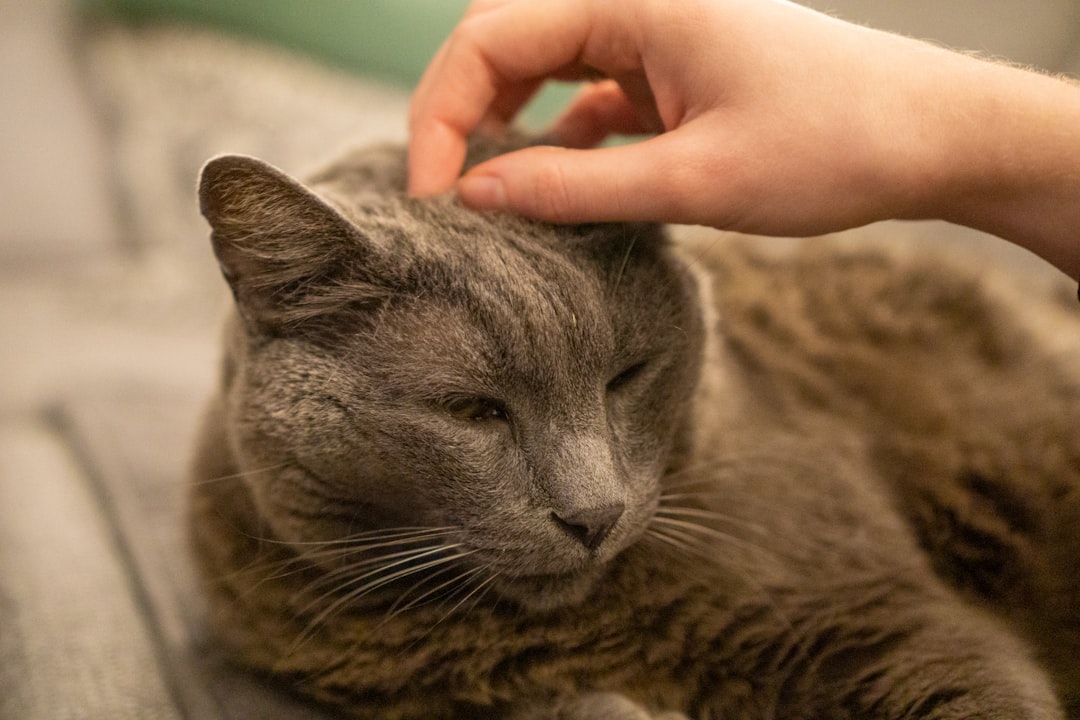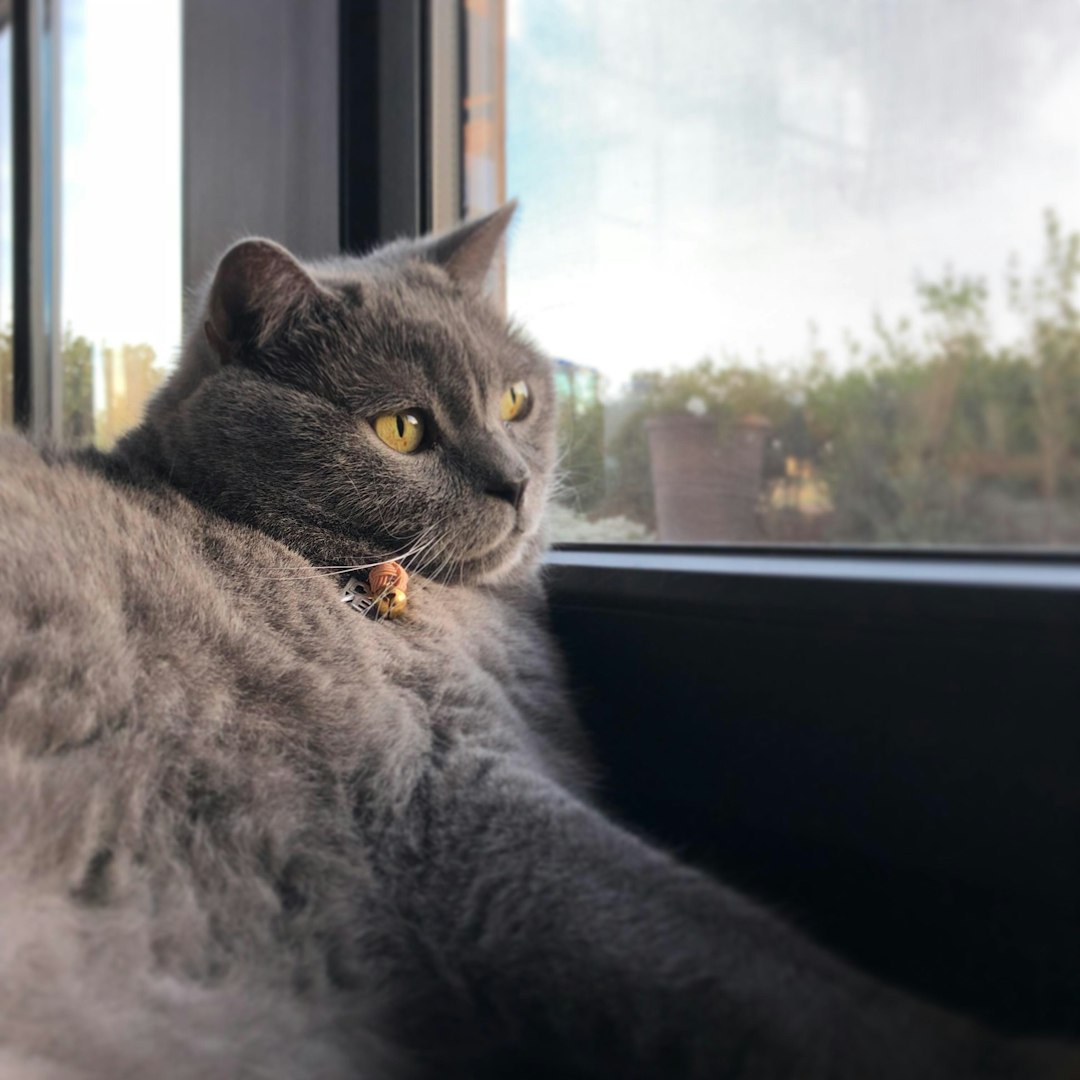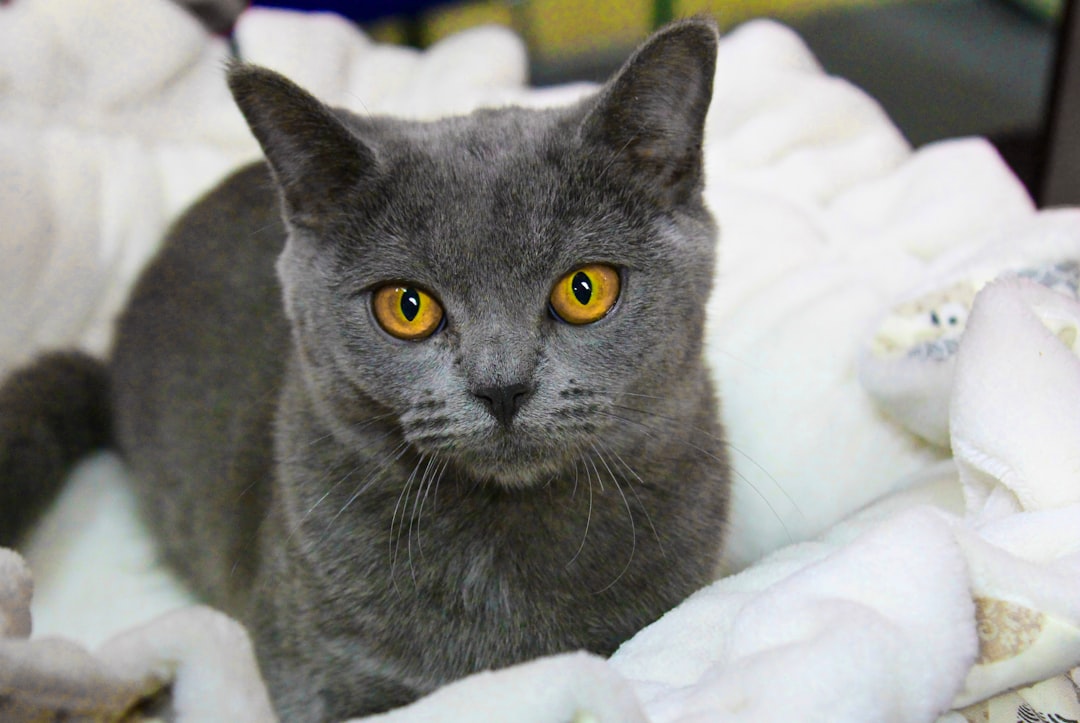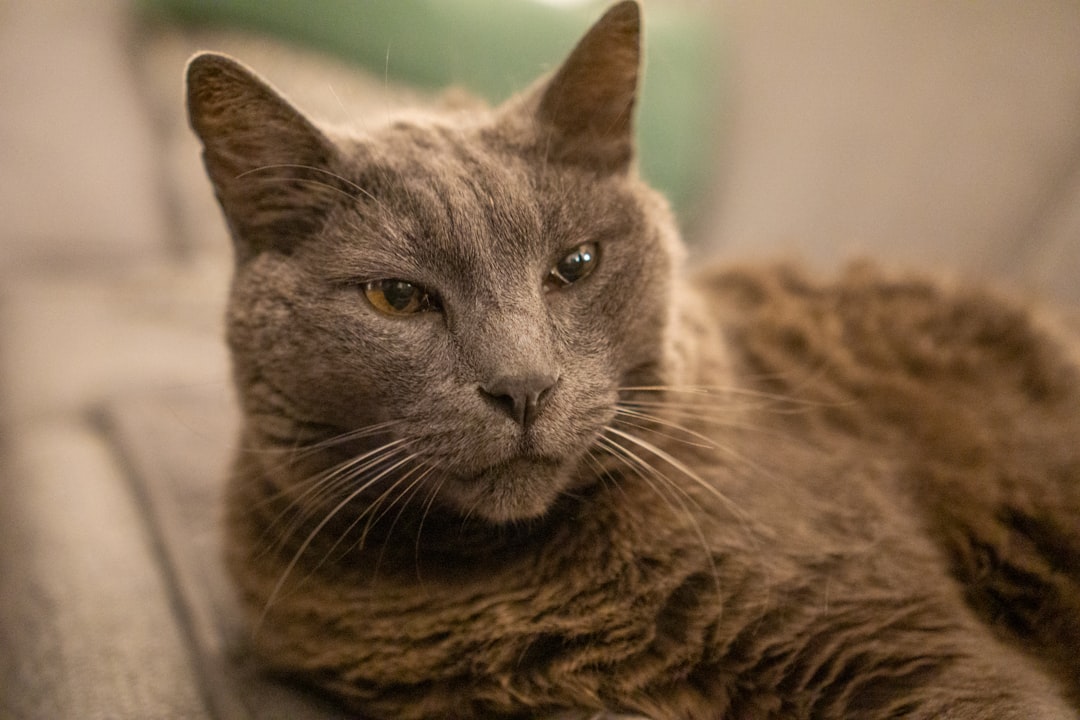Cats spend a significant portion of their day sleeping, often engaging in fascinating sleep behaviors. If you’ve noticed your feline friend exhibiting sudden movements or twitches while resting, you may wonder, "Why is my cat twitching in sleep?" Understanding these behaviors can help you differentiate between normal sleep patterns and potential health concerns. In this article, we will delve into the reasons behind cat twitching in sleep and explore how you can monitor and promote healthy sleep for your beloved pet.
Understanding Feline Sleep Cycles
Feline sleep cycles are fascinating and quite different from human sleep patterns. Cats experience two primary stages of sleep: Non-REM (NREM) and REM (Rapid Eye Movement) sleep. Here’s a brief overview of these stages:
NREM Sleep: Cats spend about 75% of their sleep in this phase. During NREM, they may doze lightly, occasionally twitching or shifting positions but remaining relatively still.
REM Sleep: This stage accounts for about 25% of a cat’s sleep. It’s during REM sleep that you may observe more pronounced twitching. In fact, cat twitching in sleep often occurs as their brains process memories and experiences.
Key Points:
- Duration: Cats sleep approximately 12-16 hours a day, with many waking up frequently.
- Cycles: Each cycle lasts about 15-30 minutes, with cats transitioning between NREM and REM several times.
- Activity: Although felines can settle into deep slumber, they remain alert to their surroundings, ready to react.
Understanding these sleep cycles can help pet owners recognize the normal behavior of their cats, including cat twitching in sleep, and distinguish between typical sleep movements and potential health issues.

Common Reasons for Cat Twitching
If you’ve ever noticed your cat twitching in sleep, you may wonder what’s happening behind those sleepy eyelids. Here are some common reasons why your feline friend exhibits this behavior:
Dreaming: Just like humans, cats experience Rapid Eye Movement (REM) sleep, a stage where dreams occur. During this time, muscles may twitch as they react to dreaming, possibly about chasing prey or playful interactions.
Nervous System Activity: Cats have an active nervous system, leading to involuntary muscle spasms while they rest. This is especially common and usually harmless.
Excitement or Stress: An emotionally charged day can lead to twitching in sleep. If a cat has experienced stimulation or stress, their body may react accordingly during rest.
Age: Older cats may twitch more frequently in sleep due to changes in their nervous system or sleep patterns.
Interestingly, while cat twitching in sleep is often benign, always observe its frequency. If the twitching appears excessive or is accompanied by unusual behaviors when awake, it may warrant a visit to the vet for further evaluation. Understanding the nuances of your cat’s sleep behavior will help you ensure they maintain a healthy, happy lifestyle.
The Role of REM Sleep in Cats
When you observe a cat twitching in sleep, it’s essential to recognize that your feline friend experiences various sleep cycles, including REM (Rapid Eye Movement) sleep. This phase plays a crucial role in a cat’s overall well-being and is often when you’ll notice the most twitching.
Key Aspects of REM Sleep in Cats:
- Duration: Cats spend approximately 25% of their sleep time in REM, which can range from 30 to 50 minutes during a typical sleep session.
- Brain Activity: During REM sleep, a cat’s brain activity resembles that of wakefulness, which is when the twitching often occurs.
- Dreaming: It’s believed that cats dream during this stage, explaining the sudden movements and sounds they make, mimicking hunting or playing.
Importance of REM Sleep:
- Cognitive Function: REM sleep helps improve memory and learning abilities in cats.
- Physical Health: It aids in muscle recovery and emotional regulation, ensuring your cat feels rejuvenated.
In summary, when you see a cat twitching in sleep, it’s likely part of a healthy REM sleep cycle, signifying not only restful sleep but also the fascinating nature of feline behavior.
Potential Health Concerns
While observing your cat twitching in sleep can be perfectly normal, it’s essential to be aware of potential health concerns associated with such behavior. Here are a few considerations:
Seizures: Unlike normal twitching, seizures are typically more intense and longer-lasting. Key signs include:
- Loss of consciousness
- Jerking or uncontrolled movements
- Excessive drooling
Neurological Disorders: Persistent or increasing twitching could indicate underlying neurological conditions. Symptoms may include:
- Disorientation
- Behavioral changes
- Difficulty with coordination
Pain or Discomfort: Cats may twitch while sleeping due to pain. Signs include:
- Frequent waking
- Restlessness during sleep
- Changes in appetite or grooming habits
If you find your cat twitching in sleep more frequently or displaying concerning behaviors, consider monitoring their sleep patterns. Keeping a log can help your veterinarian identify any issues.
Be vigilant about changes in your cat’s behavior. Early intervention can lead to better health outcomes and a more restful sleep for your feline friend.

Twitching vs. Seizures: Key Differences
When observing your cat, you might notice cat twitching in sleep that can sometimes cause concern. It is crucial to understand the distinctions between benign twitching and the more serious occurrence of seizures. Here’s a comparison to help clarify:
| Aspect | Cat Twitching in Sleep | Seizures |
|---|---|---|
| Occasion | Common during REM sleep | Occurs unexpectedly, any time |
| Body Movement | Gentle, rhythmic twitching | Violent, erratic movements |
| Duration | Typically lasts a few seconds | Can last from seconds to minutes |
| Post-event Behavior | Resumes sleep peacefully | Disorientation, lethargy post-episode |
| Awareness Level | None; deep sleep | May appear dazed or confused |
Key Takeaway: If you notice your cat twitching in sleep, it’s typically harmless and a sign of dreaming. However, if your cat experiences sudden, intense movements or disorientation after twitching, consult a veterinarian. Understanding the cat twitching in sleep vs. seizures will help you monitor your feline effectively.
How to Monitor Your Cat’s Sleep Behavior
Observing your cat’s sleep behavior can provide insight into their overall health and well-being. Here are some effective ways to monitor cat twitching in sleep:
Create a Comfortable Sleeping Area: Ensure your cat has a cozy and quiet place to rest. This environment promotes natural sleep patterns.
Regular Sleep Schedule: Maintain a consistent daily routine. Cats tend to thrive when they have a clear structure around feeding, playtime, and sleeping.
Watch for Twitching Patterns: Note the frequency and duration of any twitching. Frequent, intense cat twitching in sleep might warrant closer observation.
Record Changes: Keep a journal or log to track any noticeable changes in their sleep behavior, including pacing, vocalization, or sudden awakenings.
Use a Camera: Setting up a pet camera can help you monitor your cat while they sleep, allowing you to spot cat twitching in sleep incidents in real-time.
By implementing these tips, you can better understand your feline friend’s sleep behavior and easily identify any concerning changes that require attention.
When to Seek Veterinary Advice
If you notice your cat twitching in sleep, it’s often a normal part of their sleep cycle. However, certain signs may indicate that your cat requires veterinary attention. Keep an eye out for the following:
- Increased Frequency: If the twitching becomes frequent or lasts longer than usual.
- Accompanying Symptoms: Look for signs like unusual vocalizations, disorientation upon waking, or loss of bladder control.
- Changes in Behavior: Sudden lethargy, lack of appetite, or hiding can signal underlying issues.
- Physical Alterations: Monitor for twitching during wakefulness, which may suggest additional concerns.
Comparison Table: Normal Twitching vs. Signs to Monitor
| Characteristic | Normal Twitching | Signs to Monitor |
|---|---|---|
| Duration | Brief moments | Extended episodes |
| Awareness | Wakes normally | Disorientation upon waking |
| Physical State | Relaxed body posture | Stiff or rigid posture |
| Other Behaviors | None | Excessive vocalizations |
If you observe any of these alarming signs along with your cat twitching in sleep, contacting your veterinarian is crucial. Early intervention can help ensure your cat remains healthy and happy.

Tips for Promoting Better Sleep in Cats
Helping your feline friend achieve restful sleep can reduce instances of cat twitching in sleep. Here are some effective strategies to enhance their sleeping environment:
Create a cozy sleeping area:
- Provide a soft, warm bed in a quiet space.
- Choose locations with minimal foot traffic to avoid disruptions.
Establish a routine:
- Set regular feeding and play times.
- Consistency fosters a sense of security and helps regulate their sleep patterns.
Engage in interactive play:
- Stimulating playtime before bedtime can help expend excess energy.
- Use toys that mimic prey to satisfy their hunting instincts.
Provide enriching environments:
- Incorporate scratching posts, climbing trees, or puzzle feeders to keep your cat mentally and physically engaged throughout the day.
Limit disturbances:
- Keep noise and light levels low during their sleep hours.
- Consider using blackout curtains to maintain darkness.
By implementing these tips, you can significantly improve your cat’s sleep quality, ultimately reducing the occurrences of cat twitching in sleep and enhancing their overall wellbeing.
Frequently Asked Questions
What causes my cat to twitch while sleeping?
Twitching during sleep in cats is a common behavior, often linked to the different sleep stages they experience. Cats go through REM (Rapid Eye Movement) sleep, which is when dreaming occurs. During this stage, it’s normal for them to exhibit twitching of the paws, facial muscles, or even their tails as they respond to dream stimuli. Twitching can also be a sign of your cat’s heightened excitement or hunting instincts being played out in their dreams.
Is it normal for cats to twitch in their sleep?
Yes, it is entirely normal for cats to twitch while they are asleep, especially during the REM stage of sleep. This involuntary muscle activity is an indication of dreaming or deep relaxation. Most cats experience this at some point, and it typically does not indicate any underlying health issues. However, if the twitching seems excessive or is accompanied by other concerning symptoms, consulting a veterinarian may be advisable.
How can I tell if my cat is having a nightmare during sleep?
While it can be difficult to definitively know if your cat is having a nightmare, certain signs can suggest distress. If your cat appears to be twitching intensely, vocalizing, or exhibiting signs of fear, such as sudden movements or seemingly trying to escape their dream, they may be experiencing a nightmare. In general, watching their sleep patterns can help determine if they are having a restful sleep or struggling with a bad dream.
Should I wake my cat if they are twitching in their sleep?
It is generally not necessary to wake a twitching cat from sleep, as this behavior is normal and often temporary. Waking them abruptly can startle them and may even lead to stress or confusion. However, if the twitching persists for an excessively long time or is accompanied by other unusual behaviors, it’s best to consult your veterinarian for a thorough evaluation.



